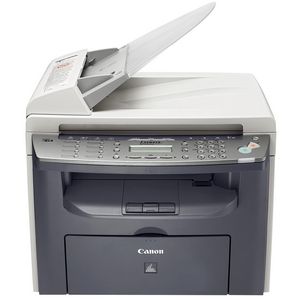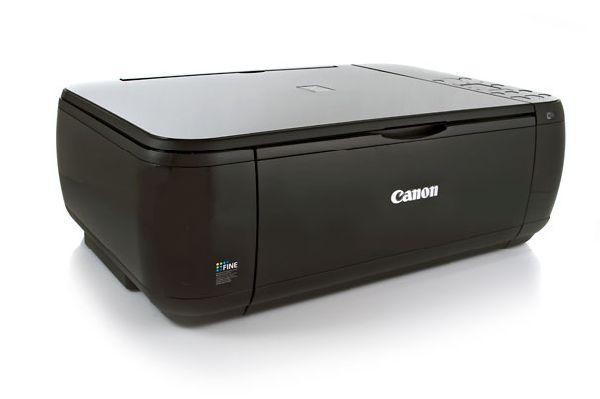Back To School Technology Buyer's Guide
by Zach Throckmorton on August 4, 2011 8:55 PM ESTPrinters
The second peripheral every college student should consider buying is a printer. You might have easy access to a printer in your dorm, or the nearest campus lab might be a hike from your apartment. And you might not finish your paper until 3am, and it might be the end of December and your northern campus is getting hammered by a snowstorm—doing that once was enough to motivate me to save up enough money for a printer!
Printers come in three basic types: laser, inkjet, and all-in-ones. All-in-ones combine a copier, scanner, and printer (either a laser or inkjet) into one device. Inkjet printers are usually the least expensive initially, but the cost of printing (the ink cartridges) is usually higher per page than laser printers. Laser printers can sometimes be quite inexpensive, and while toner cartridges cost more than ink cartridges, they last much longer. The majority of printing done by college students is black and white text, and for that reason, I recommend laser printers over inkjet printers. However, if you won’t be printing that much (say, less than 100 pages per month), an inkjet printer is a viable solution. I particularly like all-in-ones because they often aren’t that much more expensive than dedicated printers and being able to copy and scan at home means fewer trips to the computing center or library—and not getting nickle and dimed for those services, as most colleges charge a per-page fee for them.
Canon's PIXMA ip2702 is an inexpensive inkjet at $34 that can handle occasional printing with ease. Spending more money on a dedicated inkjet printer can yield additional features like wireless printing and higher quality picture printing, but durability and reliability general don't start to improve until you shell out $200+ on a prosumer or commercial grade inkjet. For mostly black and white text, cheaper inkjets are just as good as cheap inkjets.

If you'll be printing out hundreds of pages of text per month, Brother's HL-2240D and Samsung's ML-2525 are great budget options. Both can occasionally be found on sale for $50 or less. Neither of these models are built like tanks, but if you take care of them, they'll last for years (I still use a Samsung ML-2010 that I bought in 2006). Like inkjets, spending more money on a laser printer might mean faster printing, wireless printing, and/or more capacious toner cartridges, but again, these features are not necessary for most college students.

Finally, Canon's PIXMA MP495 and imageCLASS MF4350d are inkjet and laser (respectively) all-in-ones. The MP495 is compact in size and also features wireless printing, while the MF4350d is physically larger (though its footprint is not terribly large, unlike many dedicated scanners). The MP495 is currently on sale for less than $60, so unless you're very budget-conscious, the added scanning and copying capabilities are definitely worth the $20 extra compared to the PIXMA ip2702. At less than $100, the MF4250d is very competitively priced compared to other laserjet all-in-ones. Regardless of whether you use a dedicated inkjet or laser printer, or some sort of all-in-one, keep in mind that you can dramatically lower printing costs by refilling ink and toner cartridges.
If you'd rather read papers, book chapters, and assignments on a portable device than printing out sheet after sheet of paper, we cover tablets and ereaders on the next page.











94 Comments
View All Comments
blueeyesm - Friday, August 5, 2011 - link
Sure, get a MacBook and discover that you overpaid for a computer that can't run a required application for your program.How do I know this? I work for a university where I have seen this time and again. As StormyParis said, you should try being what you do, not what you own.
Sure, install Parallels and Windows. But you need to pay for your copy of Windows. More money spent where it could have gone to books or food.
Portability became "key" due to a trend where it was "cool" to have something lightweight and you could take it with you. A convenience that was turned into necessity. Before that, students along just fine with desktops.
Dorms provide desk space, thus yes it DOES work. It is not 0 chance, nor retarded.
If you are worried about theft, get a Kensington cable lock and lock it all down.
antef - Saturday, August 6, 2011 - link
I only graduated undergrad in 2009, so definitely during a period where laptops were plenty affordable, yet I got through college just fine with only my gaming rig and no laptop. I even had a 5.1 sound system and lived in a super cramped, wedge-shaped room one year with a roommate. Yes it was crowded but completely fine. I never had a need for a laptop - they only distract you in class and a notebook and pen work fine for notes. I didn't go the library much as I found it no better a place to study than my own dorm or apartment, but when I did there were public computers available. If you need/want a desktop as I did, you can definitely save money by not having a laptop also if you don't need it. However, I realize most students love going to the library or coffee shops or whatever to do work, in which case you'll want one. Also, if you have no need for a desktop, the laptop is a better option because it's less of a hassle when moving.shellcrash - Saturday, August 6, 2011 - link
There is also a common denominator issue going on: not everyone is expected to have a laptop. If one is required, the prof borrows one from the IT department.I graduated in 2006 & laptops were affordable, but they have durability issues that show up when in frequent transportation or use. In random work meetings having a desk & environment designed for work is much better than trying to do serious work in a laid back coffee shop environment; I stopped using my laptop when I started using my Palm (or was it lol TI-89?) & flash drive effectively. It also didn't help that the fans on the laptop died and some keys stopped working on the keyboard.
The reviews didn't cover phones, although it is the 2nd most crucial instrument in college. Needs to be able to be backed up to computer and do fast assignment scheduling.
anishannayya - Monday, August 8, 2011 - link
75% (really closer to 50%) percent of my classmates didn't have to spend a dime for their computers.50% of my classmates aren't CS/Engineering majors.
The 20% of CS/Engineering majors that have a Mac inevitably end up having to install and use Windows.
The only Mac worth the money is the Air. For everything else, your better off with a Thinkpad.
Lastly, Macs look great, but durability is very important when you take your device everywhere.
And RE desktops: Many gamers bring their desktop.
Neo Elemental - Monday, August 15, 2011 - link
I had a desktop all the years I was in college. To some, having additional horsepower is a non-negotiable (think games). I did end up caving and getting a netbook in my senior year.I don't see how the desktop+netbook combo is any less feasible or attractive for someone at an equivalent price (except that not everyone can build their own desktop).
This isn't the site for those who are just going to get a Macbook because they can afford it. A majority of the things mentioned/reviewed on this site are focused towards desktops and non-Apple systems.
mfenn - Thursday, August 4, 2011 - link
You make a big deal about constrained space when you talk about the PC itself, but you seem to completely forget about it when you recommend dual monitors. A tower can easily be tucked under a bed or desk, a second 22" monitor cannot.Kaboose - Friday, August 5, 2011 - link
Wall mount :D(mnewsham)
Friendly0Fire - Thursday, August 4, 2011 - link
"And given the limitations of the 400W PSU, I wouldn't add a GPU that's more power-hungry than a Radeon HD 6970."Surely you meant a 6790? The 6970 isn't exactly sipping power.
Gigantopithecus - Thursday, August 4, 2011 - link
Nope, the 6970 is not exactly a power sipper, but at peak during gaming it draws less than 200W. The rest of the system at stock without more components added isn't going to draw more than another 120W or so, and that leaves 20%+ headroom on the PSU. The link to Bench I gave with that line shows the 6970 using 340W from the wall, and the Bench test platform is a more power-hungry system than the one in this guide. A friend of mine is rockin' a GTX 560 Ti (a slightly less power-hungry card than the 6970) with a mildly OC'd AMD PII X4 (a 125W CPU vs the 95W CPU in the guide), two fans, one HDD system on this same PSU with no issues. It's a good PSU.JarredWalton - Friday, August 5, 2011 - link
Well, I've run a single 5870 off of a 500W PSU, and power draw at the outlet never got about 380W. Accounting for efficiency, a 400W PSU should still handle a 6970, but you wouldn't want to load it up with other extras or extreme overclocking.